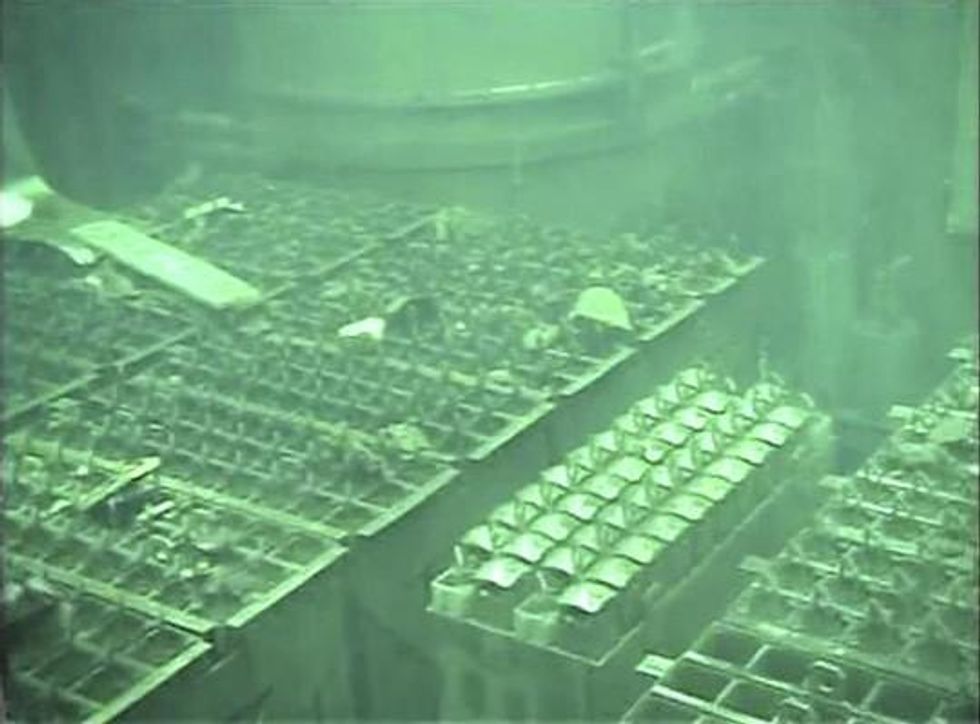The NRA said that it will provide 'enhanced oversight' to TEPCO as the company begins the hugely delicate process of removing 1,331 spent fuel assemblies and 202 unused assemblies. The fuel rods are brittle, potentially damaged, and still located high above the ground in a badly damaged building that has buckled and tilted and could collapse if another quake strikes.
The fuel assemblies are in a 32 x 40 feet concrete pool, the base of which is on the fourth story of the damaged reactor building. The assemblies - which contain plutonium, one of the most toxic substances known - are under 23 feet of water.
If the fuel rods - there are 50-70 in each of the assemblies, which weigh around 661 pounds and are 15 feet long - are exposed to air or if they break, catastrophic amounts of radioactive gases could be released into the atmosphere.
Arnie Gundersen, a veteran U.S. nuclear engineer and director of Fairewinds Energy Education, says the Unit 4 fuel rod removal is like to trying to pull cigarettes from a crushed pack.
The 1,331 used fuel rod assemblies contain radiation equivalent to 14,000 times the amount released in the atomic bomb attack on Hiroshima.
"Full release from the Unit-4 spent fuel pool, without any containment or control, could cause by far the most serious radiological disaster to date," say independent consultants Mycle Schneider and Antony Froggatt in a recent World Nuclear Industry Status Report.


